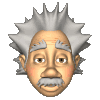








| Home |
| A Guide to Local & Regional Anaesthesia |
| A Guide to General Anaesthesia |
| Narcomed Anaesthesia & Pain Management |
| Professional Details and Curriculum Vitae | Legend of the Sandman |

A GUIDE TO
LOCAL AND REGIONAL ANAESTHESIA
Many patients, and even some physicians, automatically assume that surgery requires general anaesthesia, and that the patient should be asleep during surgery. This is not true. Many procedures can be performed on awake patients, using local or regional anaesthesia. This not only avoids the risks and unpleasantness sometimes associated with general anaesthesia, but may also provide specific benefits such as reduced blood loss and better postoperative analgesia.
Patients are often concerned about having surgery under a local or regional anaesthetic. These concerns are not usually justified by the facts. The more patients understand the reasons for, and the benefits of, local or regional anaesthesia, the more likely they are to choose this type of anaesthetic. Unfortunately, in these days of cost-cutting and same day surgery, patients may never get the opportunity to discuss their anaesthetic options with an anaesthetist in detail prior to surgery. In the rush to get through a busy operating list the anaesthetist may, unfortunately, decide that it is quicker and simpler just to put the patient to sleep, rather than enter into the discussion and education necessary to allow the patient to make an informed choice about the most appropriate type of anaesthesia.
Patients are becoming more involved as consumers of health care. They are actively seeking out information about treatment choices, and some are turning to the Internet as a source of medical information. This site is provided for patients who want to learn more about local and regional anaesthesia. However, the final decision about the best type of anaesthetic depends on the specific operation, patient, surgeon, and anaesthetist involved.
Anaesthesia means the absence of sensation. Regional anaesthesia means blocking the nerve supply to part of the body, such as an arm, so the patient cannot feel pain in that area. Local anaesthesia, strictly speaking, means putting local anaesthetic ("freezing") around the affected area to make it pain free. However, many people use the phrase loosely to include regional anaesthesia.
Local or regional anaesthesia can often be used to prevent pain during surgery. Sometimes it is used by itself, with no other medications, so that the patient remains wide awake during surgery. It can also be combined with sedative drugs to make the patient relaxed or sleepy during surgery.
Sometimes local or regional anaesthesia is used in addition to a general anaesthetic (i.e., in patients who are asleep during surgery). This is done to reduce the stress associated with surgery, to allow a lighter level of anaesthetic during surgery, and to provide pain relief after surgery.
Nerve blocks are also used in the diagnosis and treatment of some painful conditions, and to provide pain relief during labour.
The most common drugs are local anaesthetic agents, which block all types of nerve conduction. They prevent pain and may also prevent movement in the area until the block wears off.
A variety of local anaesthetic drugs is available:
For spinals and epidurals, narcotic painkillers such as morphine and fentanyl can be used, usually in addition to a local anaesthetic.
Most local and regional anaesthetic techniques involve using a syringe and needle to inject drugs in the correct place. Unfortunately, this can often be uncomfortable, and the local anaesthetic may sting during injection. Most patients consider this discomfort a small price to pay for pain relief during and after surgery.
During the operation, patients may still be able to feel touch and pressure. Occasionally (e.g. during delivery of a baby by Caesarean Section), patients may feel tugging. But patients should not feel pain during the operation.
Will it work?
When the right amount of the right drug is injected in the right place, it will provide good pain relief. The problem areas are usually putting the drug in the right place and waiting long enough for it to work. In some cases, the correct spot is easy to identify (e.g. spinal anaesthesia) while, in other cases (e.g. epidural, sciatic nerve block), it is harder to find the correct spot. Most blocks take 5-20 minutes to work.
Commonly used blocks are usually 90-99% likely to work, depending on the type of block and the skill of the anaesthetist.
Depending on the circumstances, there are a variety of options available:
What are the potential side effects and/or complications?
In general, local or regional anaesthesia is very safe, and usually safer than a general anaesthetic. However, the potential for side effects or complications exists with any form of anaesthesia.
The most common side effect of a block is a temporary weakness or paralysis of the affected area. This is often useful to the surgeon, and wears off after a while.
The complications that may arise depend on the specific block. They usually occur when the local anaesthetic is injected in the wrong place. If a large volume (10-20 mls.) of local anaesthetic is injected into a vein by mistake, it may cause convulsions and even cardiac arrest. This is why physicians always inject local slowly, sucking back on the syringe to check the local is not going into a vein. Major nerve blocks are safe when performed by physicians trained in the technique, and in resuscitation, in an area equipped with oxygen, suction, drugs, and other essential equipment.
Why choose a local or regional anaesthetic?
Surveys indicate that anaesthetists would often choose local anaesthesia if they required surgery themselves, for the following reasons:
Reasons to avoid a local or regional anaesthetic
For small cuts and the removal of small skin lesions, local anaesthetic is injected around the site. This may require several injections, but it is usually simple, safe and effective.
The idea of having an eye operation while awake seems unpleasant to many patients. However, it is actually one of the best and most successful types of local anaesthesia. With the latest advances in cataract surgery, the operation is being done with smaller incisions, requiring less anaesthetic. For some operations, only eye drops are required. Other procedures require local anaesthetic to be injected around or behind the eye.
Very rare complications include: injecting into the fluid surrounding the brain, causing seizures; puncturing the eye; or a blood clot forming behind the eye, which may delay surgery.
Blocks for hand and arm surgery
Various types of block can be used:
Spinal and epidural anaesthesia
Spinal anaesthesia involves putting local anaesthetic in the patient's back to "freeze" the lower part of the body. It is usually very safe and effective. It may be associated with less blood loss, and less risk of dangerous blood clots, than general anaesthesia.
Spinal anaesthesia is suitable for many procedures in the lower half of the body. Common uses for spinal anaesthesia include:
Technically, there are two types of "spinal" anaesthesia: true spinal, or "intrathecal" anaesthesia, and epidural or extradural anaesthesia.
The first technique involves injecting local anaesthetic into the CSF, the fluid which surrounds the spinal cord. This produces a very intense nerve block very quickly, with only a small amount (half teaspoon) of local anaesthetic. The major disadvantage of a spinal anaesthetic is a drop in blood pressure, caused by temporary blockage of the nerves that control blood flow into the legs, so that blood collects in them. This can be treated with intravenous liquids and drugs, if necessary.
Headaches after spinal anaesthesia used to be a major problem. Now, with the use of very small specially-designed needles, headaches are very rare. If they occur, they can be treated with rest, adequate liquids to drink, simple pain-killers such as Paracetamol and if necessary by an procedure called an "epidural blood patch".
Epidural or extradural anaesthesia uses a larger volume of anaesthetic, positioned in the fat and veins further away from the spinal cord. This block takes effect more slowly, which can be an advantage in some cases. For example, an epidural is less likely to produce a severe drop in blood pressure than a true spinal block. The other major advantage is that a small tube or catheter can be placed in the epidural space to allow the block to be continued over a period of hours or days, while a true spinal block only lasts a few hours.
The major disadvantage of epiduralanalgesia is that larger amounts of local anaesthetic are used (about 20 mls.) which can cause serious complications if they are put in the wrong place. In a vein, the local anaesthetic may cause convulsions or cardiac arrest. In the CSF, it may spread too high, which may stop the patient breathing. Fortunately, all of these complications can usually be treated by an anaesthetist, without long-lasting problems.
If relaxation and breathing exercises prove ineffective, nitrous oxide ("laughing gas") or narcotics (pethidine, morphine) may help. However, epidural analgesia is the most effective form of pain relief in labour, and it can even be extended for use in forceps delivery or Caesarean section.
A small, sterile plastic tube is placed in the patient's back by an anaesthetist. Local anaesthesia is inserted, providing pain relief. Sometimes narcotic pain killers are added for increased effect. Pumps can be used to keep the epidural "topped up".
Side effects may include temporary weakness in the legs, difficulty passing urine, and/or a decrease in blood pressure.
Rare complications may include headache, decreased breathing, and/or seizures. Cases of paralysis may occur as a result of: injecting the wrong drug; a clot or infection in the epidural space; and/or inadequate treatment of complications, but this is an exceedingly rare complication.
Women who have epidurals in labour may be more likely to have forceps deliveries or Caesarean sections. They may also be more likely to have backache after delivery than women who did not have epidurals.
Epidural analgesia may avoid the potential complications of an emergency general anaesthetic, and is especially useful for women with high blood pressure, twins, or breech presentation.
There is a wide variety of other nerve blocks, including blocks at the ankle, around the groin, in the buttocks, underneath ribs and in various locations on the face. Nerve blocks are also used in the diagnosis and treatment of some painful conditions, such as the use of epidural steroid injections for some types of back pain.
All medical procedures have risks and benefits. For many operations, the risk/benefit ratio for local or regional anaesthesia is better than for general anaesthesia. Patients should ask whether their operations can be done under local or regional anaesthesia, and discuss this issue with their physicians.
Post Grad Cert Clinical Ultrasound
Diploma of Clinical Hypnosis